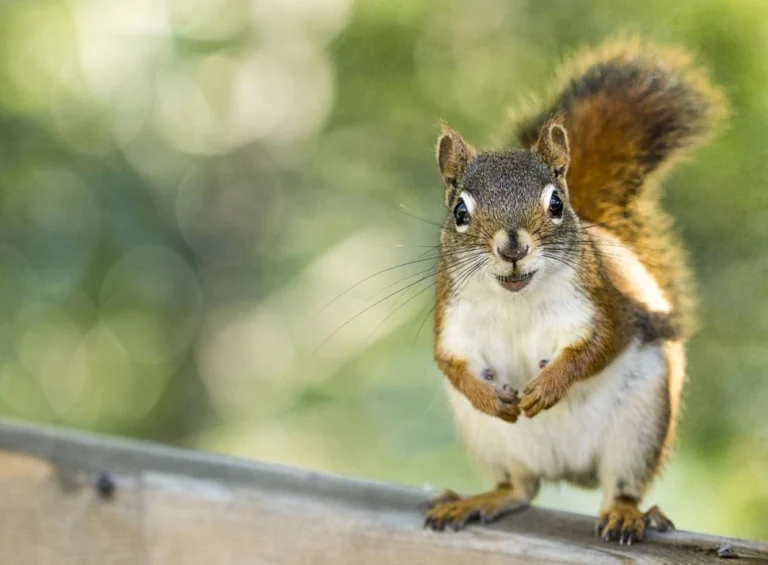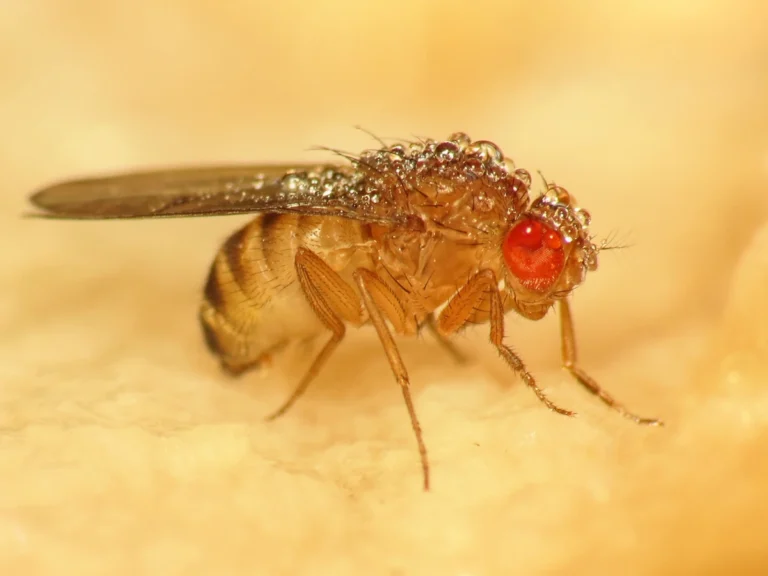Table of Contents
ToggleI bet you didn’t realize that bees each had five eyes. Because of the hundreds of tiny lenses that go into making up each of a bee’s two large eyes, the bee’s eyes are referred to as compound eyes. They can track motion with those eyes. While human vision can detect motion at intervals as small as 1/50th of a second, bees’ eyes can do so at 1/300th of a second. The three ocelli function as simple eyes, able to detect differences in brightness. Similarly, bee eyes can’t perceive the same range of hues as ours can. The ultraviolet light is visible to them, but not to us.
About a third of the food we eat every day is made possible thanks to pollination by animals such as bees, butterflies, birds, and bats. Pollination is essential for the growth of many domestic and international food crops. Soybeans, avocados, celery, broccoli, squash, sunflowers (for oil), citrus fruits, peaches, cherries, kiwis, cranberries, and melons are just a few examples of edible plants. About 80% of the United States crop is claimed to rely on honey bees for pollination, and they are crucial to the success of commercial crops like blueberries and almonds. Clover and alfalfa, both of which are pollinated by honey bees, are fed to cattle. This has ramifications for the production of meat and dairy. And that doesn’t even account for the extensive variety of processed foods that may be produced from these raw materials.
The next time you encounter a bee, keep in mind that it has five eyes instead of two.
About the 5 eyes of bees
Bees have:
There are two sets of eyes, or compound eyes, located on either side of the head;
The ocellus or ocelli refer to three basic eyes. These three diminutive orbs sit in a triangular pattern on the crown of the head between the larger compound eyes and are not particularly noticeable. The ocelli can be seen in the top photograph, but only if you look very closely.(The one up front has the appearance of a sparkling black dot.).
However, it should be noted that bees are not the only insects with 5 eyes, and specifically with 3 ocelli on the top of the head; hornets, dragonflies, wasps, and grasshoppers all have this feature as well.
Compound eyes – what are they for?
Each of a bee’s compound eyes sits on the side of its head. If we compare this to, say, true flies, we see that their compounds are oriented front and center.
Multiple lenses work together to form each eye. The colors and shapes they see and the atmosphere around them are all taken in. These eyes allow bees to see ultraviolet (UV) markers in flowers, which lead the bee to the ‘landing platform’ and ultimately the nectar reward.
A compound eye has many small lenses, all of which see the world from slightly different perspectives. The bee’s environment is depicted holistically thanks to the many captured photos from the many lenses.
What are the ocelli for?
Ocelli are sometimes referred to as “simple eyes” due to the fact that there is only one lens in each eye, despite the large number of sensory cells.
These primitive eyes cannot create an accurate mental picture of their surroundings in the same way that sophisticated ones can. Honeybees rely on them to find their way around by tracking the sun’s movement.
To compensate for the diminished light at these times, the ocelli of twilight and dawn-flying bees are enlarged.
Do Bees Fly at Night?
The vast majority of bee species are strictly diurnal. They are diurnal because they avoid going out to hunt at night when it is more challenging to see what they are doing and to avoid impediments.
Some extremely uncommon kinds of bees, however, are capable of flight in very dim light or total darkness. Most tropical bee species are nocturnal because they have adapted to flying and seeing better at night. Moonflowers and night-blooming jasmines are just two examples of the many types of flowers that are conveniently available late at night. This is beneficial for night-flying insects because they avoid competition for food sources like pollen and nectar with their daytime counterparts.
Which Kinds of Bees are Nocturnal Fliers?
A minimum of four and a maximum of seven families of bees are nocturnal or low-light fliers. The Apidae, Colletidae, Andrenidae, and Halictidae are all examples of such families.
For what reason have some types of bees adapted to flying at night?
Because there are fewer other pollinators active at night, certain bee species have adapted to flying at that time. Numerous night-opening and crepuscular-nectar-producing plants are common in areas frequented by nocturnal and crepuscular bees.
Flowers that only bloom during the day mean that daytime pollinators have to fight for limited resources. At night, moths and bats are the only serious threats to bees.
Even though the light was poor in the morning and at dusk, it is likely that bees were attracted to the flowers with the highest concentrations of nectar and pollen. There is a disproportionate amount of unused flower supply during these times.
Because of the serious dangers posed by parasites and predators, it’s possible that some bees switched to nocturnal behavior.
How Do Bees See in the Dark?
To improve their vision in extremely dim conditions, bees that have not yet evolved to fly successfully at night may employ image processing tricks. They can use their cognitive abilities to increase the time it takes for their photoreceptors to gather light before sending a signal, although this may cause blurring of moving objects.
One alternative is to attempt to construct a mosaic image by combining the data from all of their photoreceptors. However, this may lead to blurrier final photos. Neither method is particularly effective, and the nocturnal bees’ larger eyes are better suited to seeing in the dark.
Is It True That Some Bees Can’t Navigate the Nighttime Skies?
For maximum efficiency, most bees take to the air during the day, then rest up at night so they can go out foraging in full force the next day. Bees that are active during the day have little motive to venture out of their hives at night unless absolutely necessary. Even though they have the capability, they opt not to fly at night.
Even among nocturnal bees, the ability to fly at night is affected. There are numerous nocturnal and crepuscular species of the Megalopta genus (Halictidae family; Sweat bee).
According to research published in the Journal of Experimental Biology in 2007, the average time it takes for a Megalopta to land is affected by the amount of light available. The length of time it took for the bees to return to the hive and land was measured, and the results showed that the bees did not fly more slowly, but rather that they landed more slowly due to their unpredictable flight patterns and error-prone, roundabout approaches.
Night-flying bees have bigger eyes than day-flying bees, but that isn’t enough to rely on for navigation. They must also make advantage of their intelligence, as was previously mentioned. Despite their best efforts, they are not yet well adapted to flying at night.
Comparison of Daytime and Nighttime Bee Eyes
The eyes of nocturnal bees are adapted for nighttime vision. In particular, their eyes have grown larger than those of diurnal species over time in order to better detect fainter light levels. Megalopta sweat bees, a nocturnal species, were found to have 27-times-larger optical sensors, larger compound eyes, and larger facets than Apis mellifera bees.
But compared to diurnal bees, nocturnal bees have much larger ocelli. Diurnal Carpenter bees (Xylocopa ruficornis) have ocelli that are significantly smaller than those of their nocturnal counterparts, the Indian Carpenter Bee (Xylocopa melissota).
Even though they may be active at night, not all bees lack the ability to see in total darkness. Crepuscular bees are the ones that only come out at night or during twilight because they need a very dim light source to see. Both daybreak and twilight find them busy.
Is There a Connection Between Where Bees Live and Flying at Night?
Night-flying bees are found in arid regions and northern latitudes. It’s possible that they’ve adapted to flying at night because it’s easier to forage in the cool of the day, when there’s less chance of becoming overheated and less water nearby.
However, most nocturnal and crepuscular animals are found in tropical and subtropical climates. A lot of the local flora is both very aromatic and nectar-rich. It’s possible that nocturnal and crepuscular bees developed a preference for flying at night as a strategy for avoiding conflict with daytime bees and other pollinating insects.
Can Nighttime Bees Find Food Like Their Daytime Counterparts?
Although nocturnal bees’ foraging behaviors are harder to study than those of their diurnal counterparts, similarities do exist.
Flowers, day or night, can attract the attention of both daytime and nighttime bees, who will travel great distances to enjoy their nectar. Diurnal bees have an advantage here because they can use their better vision to locate their nests.
Diurnal bees will use visual cues, like landmarks, to navigate back to their hives and to remember their current locations for future use while out foraging. The honeybees in the hive will communicate this to their fellow workers.
To find their nests at night, nocturnal bees can employ polarized vision and familiar floral landmarks. However, their flight pattern differs slightly from that of diurnal bees.
They’ll be taking off from the nest, but they’ll turn around midair to look back at it, as if to memorize its position. Then they’ll circle the area in broad arcs to get a look at any potential landmarks. It’s unclear if they use this pattern of flight to memorize key locations along their foraging route.
Does Man-Made Light Affect Pollinators That Work At Night?
Artificial lighting is luring nighttime pollinators away from floral resources, according to a 2017 study published in the journal Nature, and light emissions have increased by more than 70% in North America and Europe in recent years.
The study’s primary author discovered that pollinator visits were reduced by 62% when exposed to light (such as from streetlights). There were 29% fewer species in the areas with artificial lighting compared to those without, where approximately 300 different kinds of insects were spotted.
The study’s authors suggested people to plant more night-blooming plants and to limit the use of artificial lights in public spaces.
Nocturnal Bees
Since bee biology hasn’t optimized night flight, nocturnal bees are exceedingly uncommon. There are clear visual modifications in nocturnal and crepuscular bees, but these haven’t improved nighttime navigation over daytime. The night fliers will keep hunting in the wee hours, when there is less light and they are more likely to avoid predators.
It will be interesting to watch if these bees evolve to have superior eyesight so that more plants can benefit from their pollination. We can help this massive study along by keeping the flowers going that rely most heavily on the work of nighttime bees.




